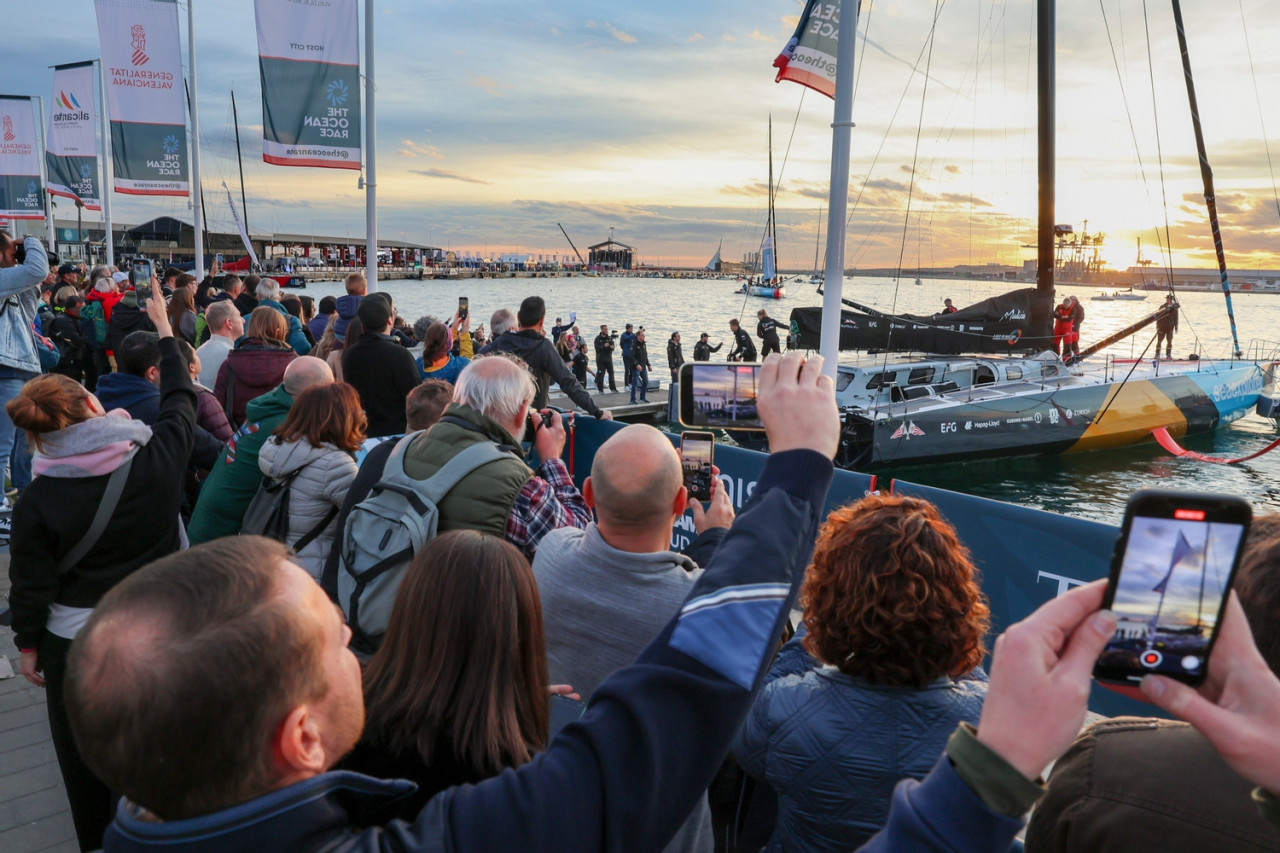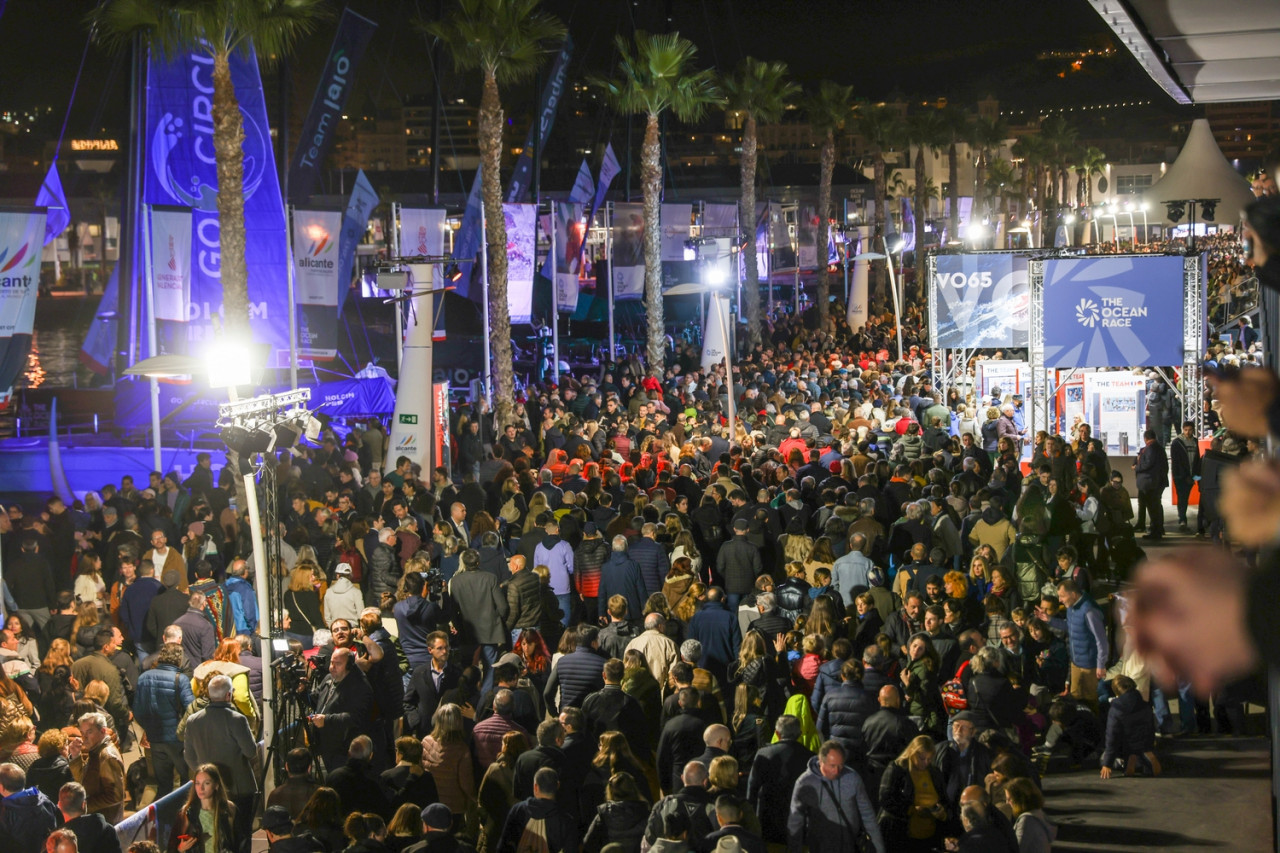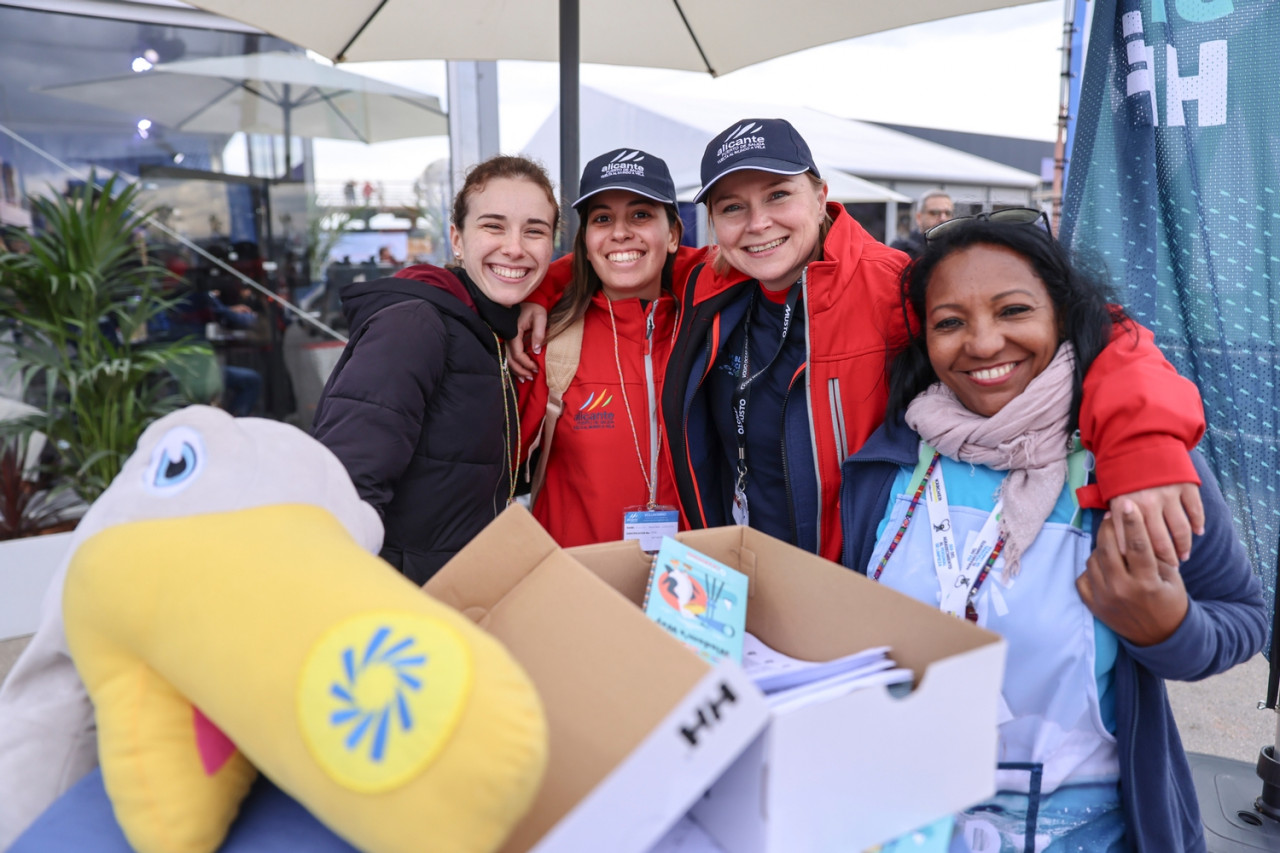Postcard from Alicante

While winter rain and winds lash Lorient, the home in Brittany of the IMOCA fleet, Alicante has been bathed in glorious sunshine. The contrast could hardly be more stark, as the Spanish city prepares for the start of the 14th edition of The Ocean Race on Sunday.
Down at the commercial port, the five brave IMOCAs sit quietly moored alongside the pontoon, while on the shoreside, that is full of hospitality marquees, including the race’s traditional Sailors Terrace bar and restaurant, the crowds walk slowly by, listening to the mainly English commentary on the sound system.
This is a very different race, a very new world for IMOCA sailors. Despite being in Spain, the feel is more Anglo-Saxon and more corporate than at the Class’s more traditional races, in places like St Malo, Le Havre or Les Sables d’Olonne.

There’s also a sense of an historic changing of the guard at The Ocean Race. And this is never better illustrated than by the fact that, sitting just a little further along the pontoon from the IMOCAs, are a handful of old VO65 monohulls that are completing only three legs of this race, as a sort of “starter class” for young future Ocean Race stars.
There is no doubt who the stars are this time round and they come from the world of the Vendée Globe, from the boards of Guillaume Verdier and VPLP. The pioneers may be a small in number – at just five boats – but they reek of quality. They include three brand new state-of-the-art foilers in Biotherm, Holcim/PRB and Team Malizia and then two older boats in the form of pre-race favourite 11th Hour Racing Team Mãlama and then Guyot Environnement-Team Europe, the oldest boat that harks back to 2015.
The big question on everyone’s mind, as they watch the crews making their final preparations on the Spanish Mediterranean coast, is how long each of these boats can go in the pressure-cooker of fully-crewed racing without suffering serious technical issues or damage. The answer to that question seems, at this stage, to be the key to this 32,000-mile contest spread over seven stages.
 © Sailing Energy / The Ocean Race (Sailing Energy / The Ocean Race (Photographer) - [None]
© Sailing Energy / The Ocean Race (Sailing Energy / The Ocean Race (Photographer) - [None]
Also looming – even at this early stage in the proceedings – is the massive shadow cast by leg three, the 12,750 mile stage from Cape Town to Itajai. It’s going to be a Southern Ocean baptism of fire – 34 days of relentless power sailing, when boats and crews will be pushed to the limits like never before. Will all five make it to Brazil or will the war of attrition in the Big South take its toll on the first IMOCAs to try and complete this phenomenal challenge?
Of course time on the water, a big budget and a purpose-built boat makes Charlie Enright’s team on Mãlama the outright race favourites. But are they as quick as they hope they are, after months of practising alone? Looking to get the better of them are two brilliant skippers in Kevin Escoffier and Paul Meilhat on Holcim/PRB and Biotherm respectively, who are both supported by top-notch crews. But are those boats really race ready? Will they be able to cope with a punishing routine of being pushed hard 24 hours a day? Then there is Malizia – big and heavy but maybe too heavy – and then the most battle-hardened of them all, Benjamin Dutreux’s much-optimised Guyot that could spring a major surprise, come the finish at Genoa in late June.
 © Sailing Energy / The Ocean Race (Sailing Energy / The Ocean Race (Photographer) - [None]
© Sailing Energy / The Ocean Race (Sailing Energy / The Ocean Race (Photographer) - [None]
Seeing IMOCA heroes like Escoffier, Meilhat and Boris Herrmann here – on the territory of Ocean Race legends like Conny van Rietschoten, Sir Peter Blake, Grant Dalton, Magnus Olsson and Bouwe Bekking – it does bring home what has happened. For years they said The Ocean Race was out of the question for IMOCA skippers and their sponsors, with their focus on the Vendée Globe and the other major races in the IMOCA Globe Series. But now a way has been found to do it all – get back from Guadeloupe and get ready to go again. But this time fully-crewed…
Of course, when you talk to people from this race, the hope here is that many more IMOCA skippers and their commercial partners will watch what happens over the next six months and realise this is a race they cannot afford to miss out on next time round. In that sense this feels like, not just a race in transition, but a demonstration race too.
It’s a chance to show that this can be done and, at the same time, expose the yachts of the most spectacular monohull fleet in world sailing to a huge new global audience.
Ed Gorman
Teams info
IMOCA becomes the first class in sailing to impose an impact reduction rule on boat construction
An impact reduction rule limiting harmful emissions in boat construction has been the major goal of the sustainability work that IMOCA has been conducting over the last four years and now it is being implemented.
•••ALL ACCESS #2 | CLARISSE CRÉMER
Let's dive into the thrilling preparations for the Vendée Globe. For the IMOCA skippers, the year 2024 holds paramount importance, marking the culmination of their efforts. Sailing around the world solo is their ultimate…
•••